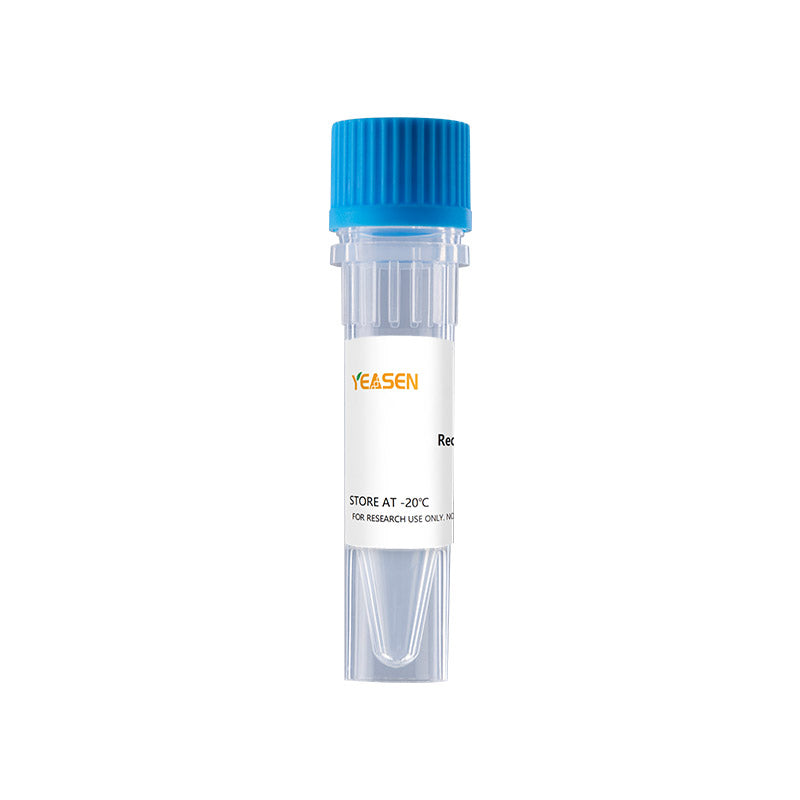Description
Human IL-36 alpha, previously called IL-1F6 and FIL1 epsilon (family of IL-1 member epsilon), is a member of the IL-1 family which includes IL-1 beta, IL-1 alpha, IL-1ra, IL-18, and novel family members IL-36 Ra (IL-1F5), IL-36 beta (IL-1F8), IL-36 gamma (IL-1F9), IL-37 (IL-1F7) and IL38 (IL1F10) . All family members show a 12 beta strand, beta -trefoil configuration, and are believed to have arisen from a common ancestral gene. IL-36 alpha is an 1822 kDa, 158 amino acid (aa) intracellular and secreted protein that contains no signal sequence, no prosegment and no potential from Nlinked glycosylation sites. It can be released in response to LPS and the cell ATPinduced activation of the P2X7 receptor. A 120 aa isoform missing aa 138 has been reported. Human IL36 alpha (aa 6 158) shares 5768% aa sequence identity with mouse, rabbit, equine and bovine IL36 alpha and 2757% aa sequence identity with other novel IL1 family members. IL36 alpha is mainly found in skin and lymphoid tissues, but also in fetal brain, trachea, stomach and intestine. It is expressed by monocytes, B and T cells. The receptor for IL36 alpha is a combination of IL1 Rrp2 (also called IL1RL2 or IL1 R6), mainly found in epithelia and keratinocytes, and the widely expressed IL1 RAcP. IL-36 alpha, beta, and gamma all activate NF-kappa B and MAPK pathways in an IL1 Rrp2 dependent manner, and induce production of inflammatory cytokines and chemokines such as CXCL8/IL-8. IL-36 alpha and other family members are overexpressed in psoriatic skin lesions, and transgenic overexpression of IL36 alpha in skin keratinocytes produces epidermal hyperplasia. IL-36 alpha is present in kidney tubule epithelia, and it is highly expressed in intubulointerstitial lesions in mouse models of chronic glomerulonephritis, lupus nephritis and diabetic nephritis.
Product Properties
|
Synonyms |
FIL1 epsilon, IL-1 epsilon, IL-1F6, IL-1H1 |
|
Accession |
|
|
GeneID |
|
|
Source |
E.coli-derived human IL-36 alpha protein, Met1-Phe158. |
|
Molecular Weight |
Approximately 17.7 kDa. |
|
AA Sequence |
MEKALKIDTP QQGSIQDINH RVWVLQDQTL IAVPRKDRMS PVTIALISCR HVETLEKDRG NPIYLGLNGL NLCLMCAKVG DQPTLQLKEK DIMDLYNQPE PVKSFLFYHS QSGRNSTFES VAFPGWFIAV SSEGGCPLIL TQELGKANTT DFGLTMLF |
|
Tag |
None |
|
Physical Appearance |
Sterile Filtered White lyophilized (freeze-dried) powder. |
|
Purity |
> 95% by SDS-PAGE and HPLC analyses. |
|
Biological Activity |
Fully biologically active when compared to standard. The specific activity determined by its ability in a functional ELISA. Immobilized rHuIL-36α at 1 µg/mL can bind recombinant human IL-1 Rrp2 Fc Chimera with a range of 0.15-5 µg/mL. |
|
Endotoxin |
< 1.0 EU per 1μg of the protein by the LAL method. |
|
Formulation |
Lyophilized from a 0.2 μm filtered concentrated solution in 2 × PBS, pH 7.4. |
|
Reconstitution |
We recommend that this vial be briefly centrifuged prior to opening to bring the contents to the bottom. Reconstitute in sterile distilled water or aqueous buffer containing 0.1% BSA to a concentration of 0.1-1.0 mg/mL. Stock solutions should be apportioned into working aliquots and stored at ≤ -20°C. Further dilutions should be made in appropriate buffered solutions. |
Shipping and Storage
The products are shipped with ice pack and can be stored at -20℃ to -80℃ for 1 year.
Recommend to aliquot the protein into smaller quantities when first used and avoid repeated freeze-thaw cycles.
Cautions
1. Avoid repeated freeze-thaw cycles.
2. For your safety and health, please wear lab coats and disposable gloves for operation.
3. For research use only.
Payment & Security
Your payment information is processed securely. We do not store credit card details nor have access to your credit card information.
Inquiry
You may also like
FAQ
The product is for research purposes only and is not intended for therapeutic or diagnostic use in humans or animals. Products and content are protected by patents, trademarks, and copyrights owned by Yeasen Biotechnology. Trademark symbols indicate the country of origin, not necessarily registration in all regions.
Certain applications may require additional third-party intellectual property rights.
Yeasen is dedicated to ethical science, believing our research should address critical questions while ensuring safety and ethical standards.

